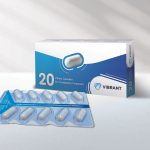
More than a decade ago, the Obama administration passed the Healthy, Hunger-Free Kids Act of 2010 as a way to counter the toll the obesity epidemic was taking on children’s health. The goal was to markedly improve the nutritional value of federal food programs that regularly put free and/or low-cost breakfasts, lunches and snacks on the plates of nearly 30 million American students. Did it work? A new study delivers a resounding yes. “We showed that the annual change in body mass index [BMI] decreased by 10 percent in children and adolescents in America following the implementation” of the law, said study lead author Dr. Aruna Chandran. She is a social epidemiologist and senior scientist with the Johns Hopkins Bloomberg School of Public Health, in Baltimore. What fueled the drop? School-based federal food programs provide “an estimated 50% of students’ caloric intake each school day,” Chandran noted. So, the upshot is that “accessibility to school meals and snacks represents a key opportunity for intervention to combat the childhood obesity epidemic,” she added. In the study, Chandran and her colleagues pored over BMI trends among 14,000 kids between the ages of 5 and 18. As a point of comparison, the investigators focused on two periods of time. The first fell between 2005 and the summer of 2016, before the new law was implemented; the second stretched… read on > read on >






































